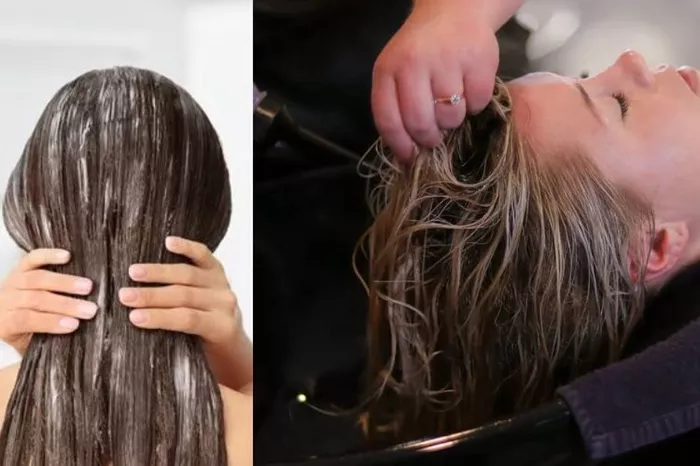Have you ever wondered why some hair looks strong, shiny, and full of life, while other hair appears dull, brittle, or prone to breakage? The secret often lies in the balance of protein and moisture in the hair. In this article, we’ll explore everything you need to know about protein treatments for hair—what they are, how they work, who needs them, and how to use them safely. Let’s dive in!
Understanding Hair Structure: Why Protein Matters
To grasp how protein treatments work, let’s start with the basics: hair structure.
Hair is made mostly of keratin, a strong, fibrous protein. Imagine your hair as a rope made of thousands of tiny protein strands twisted together. This “rope” has three layers:
- Cuticle: The outer protective layer (like roof shingles).
- Cortex: The middle layer with keratin and pigments.
- Medulla: The innermost layer (not always present).
When hair is healthy, the cuticle lies flat, the cortex is intact, and the hair is strong. But daily wear-and-tear (like heat styling, coloring, or pollution) damages the cuticle, creating gaps. This exposes the cortex, causing dryness, frizz, and breakage.
Protein treatments fill these gaps by depositing proteins into the hair shaft, acting like “glue” to repair damage and restore strength.
What Is a Protein Treatment?
A protein treatment is a product or salon service designed to reinforce hair structure by adding proteins back into the hair. These proteins temporarily patch weak areas, making hair stronger, smoother, and less prone to snapping.
Protein treatments come in many forms:
- Conditioners: Light protein for regular use.
- Masks/Deep Conditioners: Higher protein concentrations for weekly use.
- Leave-in Sprays: For ongoing protection.
- Salon Treatments: Professional-grade formulas (e.g., Olaplex, K18).
They use hydrolyzed proteins—broken into tiny pieces to penetrate hair—like:
- Hydrolyzed keratin
- Silk amino acids
- Wheat or soy protein
- Collagen
How Do Protein Treatments Work?
When applied, the tiny protein molecules in these treatments:
- Penetrate the hair shaft through damaged cuticle gaps.
- Bind to the cortex, reinforcing weak spots.
- Create a protective layer on the hair’s surface.
This process temporarily “fills in” damage, improving strength and elasticity. However, the effects aren’t permanent—hair naturally sheds proteins over time, so treatments must be repeated.
Signs Your Hair Needs Protein
Not sure if you need protein? Look for these clues:
- Mushy or limp hair when wet (lacks structure).
- Excessive breakage (hair snaps easily).
- High porosity (hair absorbs water quickly but dries fast).
- Overly processed hair (bleached, colored, or permed).
- Lack of elasticity (hair stretches but doesn’t bounce back).
Quick Test: Stretch a wet strand. If it stretches >50% without breaking, you need protein. If it snaps immediately, focus on moisture.
Types of Protein Treatments
At-Home Treatments
- Light Protein Conditioners: Daily use (e.g., Shea Moisture Manuka Honey & Yogurt).
- Protein Masks: Weekly deep conditioning (e.g., Aphogee Two-Step).
- Leave-in Sprays: For fine or protein-sensitive hair.
Salon Treatments
- Keratin Smoothing: Reduces frizz and adds shine.
- Bond Builders (e.g., Olaplex): Repair broken disulfide bonds.
- Intensive Reconstructors: For severely damaged hair.
DIY Protein Treatments
- Egg Mask: Eggs are rich in keratin.
- Greek Yogurt: Contains lactic acid and protein.
- Rice Water Rinse: Fermented rice water boosts strength.
- Note: DIY treatments are milder and may not last as long as hydrolyzed protein products.
Benefits of Protein Treatments
- Reduces Breakage: Strengthens weak areas.
- Improves Elasticity: Hair stretches without snapping.
- Enhances Shine: Smoothes the cuticle.
- Protects Against Damage: Acts as a barrier.
- Balances Moisture: Prevents over-moisturizing (yes, that’s a thing!).
How to Use Protein Treatments: Step-by-Step
- Wash Hair: Use a clarifying shampoo to remove buildup.
- Apply Treatment: Follow product instructions (avoid roots if oily).
- Wait: 5–30 minutes, depending on formula.
- Rinse Thoroughly: Use cool water to seal the cuticle.
- Follow with Moisture: Use a hydrating conditioner.
Style as Usual.
Frequency:
- Fine or low-porosity hair: Every 4–6 weeks.
- Damaged/high-porosity hair: Every 2–4 weeks.
Common Mistakes to Avoid
- Overuse: Too much protein makes hair stiff and brittle.
- Skipping Moisture: Always pair protein with hydrating products.
- Using Heavy Proteins on Fine Hair: Opt for lighter options (e.g., silk amino acids).
- Ignoring pH: Acidic treatments (pH 3.5–5.5) help seal the cuticle.
Protein vs. Moisture: Finding Balance
Hair needs both protein and moisture to stay healthy:
- Protein = Structure and strength.
- Moisture = Softness and flexibility.
Signs of Imbalance:
- Too much protein: Brittle, straw-like hair.
- Too much moisture: Stretchy, limp hair.
Who Should Avoid Protein Treatments?
- Low-Porosity Hair: Protein can build up easily.
- Undamaged Hair: Unnecessary unless preventative.
- Protein Sensitivity: Some hair reacts poorly (test first!).
Conclusion
Protein treatments are a game-changer for damaged, weak, or over-processed hair. By understanding your hair’s needs and balancing protein with moisture, you can achieve stronger, healthier locks. Always start with a patch test and consult a stylist if unsure. Your hair deserves the best—give it the protein boost it needs!
Related topics:
Mastering Protein Treatments for Strong and Healthy Hair
Revitalizing Your Hair: The Marvels of Protein Treatments
Protein Hair Treatments: Benefits, Types & More


